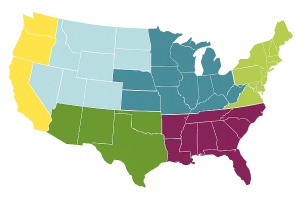Nevada Native Plants, State Flower & State Bird
Posted By American Meadows Content Team on Sep 27, 2012 · Revised on Oct 26, 2025

Knowing your location helps us recommend plants that will thrive in your climate, based on your Growing Zone.
Posted By American Meadows Content Team on Sep 27, 2012 · Revised on Oct 26, 2025
Native plants are adaptable, low-maintenance, and beautiful. They are the best choice for habitat-friendly gardens and thriving ecosystems. Find top picks for native plants in your state - and learn about your state bird and state flowers!
Follow Along With More Of Our Guides
Hello native plant enthusiasts! In the list below, you will find popular native plants and wildflower seeds, available from American Meadows, that have a native distribution in your state. You’ll also find information about your state bird, state flower, and state wildflower!
Nevada is split in the American Meadows regions – grow our Native Southwest Wildflower Seed Mix in Southern Nevada, and grow our Native West Wildflower Seed Mix in Northern Nevada.
Swamp Milkweed (Asclepias incarnata)
Wild Strawberry (Fragaria virginiana)
California Poppy (Eschscholzia californica)
Red Cardinal Flower (Lobelia cardinalis)
Lacy Phacelia (Phacelia tanacetifolia)
Tufted Hair Grass (Deschampsia cespitosa)

Mountain Bluebird ~ Sialia currucoides
A pair of Mountain Bluebirds floating before a pine tree in the sparkling afternoon sun is a glorious sight. The vivid blue of the male rivals the deep blue Nevada sky, and can be best appreciated on a bright summer day. This gentle, friendly bird used to be common in city parks and suburban gardens but has been crowded out of many areas by such upstart immigrants as the English sparrow and starling.
Sagebrush ~ Artemisia tridentata
The Sagebrush is the floral emblem of Nevada, a state proud of its enchanting desert. Unknown to many people, Sagebrush has its distinct points of beauty and value. It furnishes food for many hardy plains animals. It is a shrubby plant whose height may vary from twelve inches to twelve feet. Inconspicuous yellow flowers, set in clusters, grow at the end of the shrub's branches. Thousands of the plants, reflecting the day's differing lights, make the desert dance and come alive.
From The Wildflowers of the 50 States U.S. stamps issued July 24, 1992:

